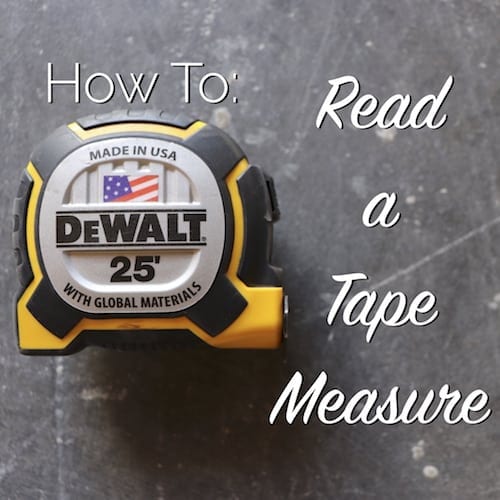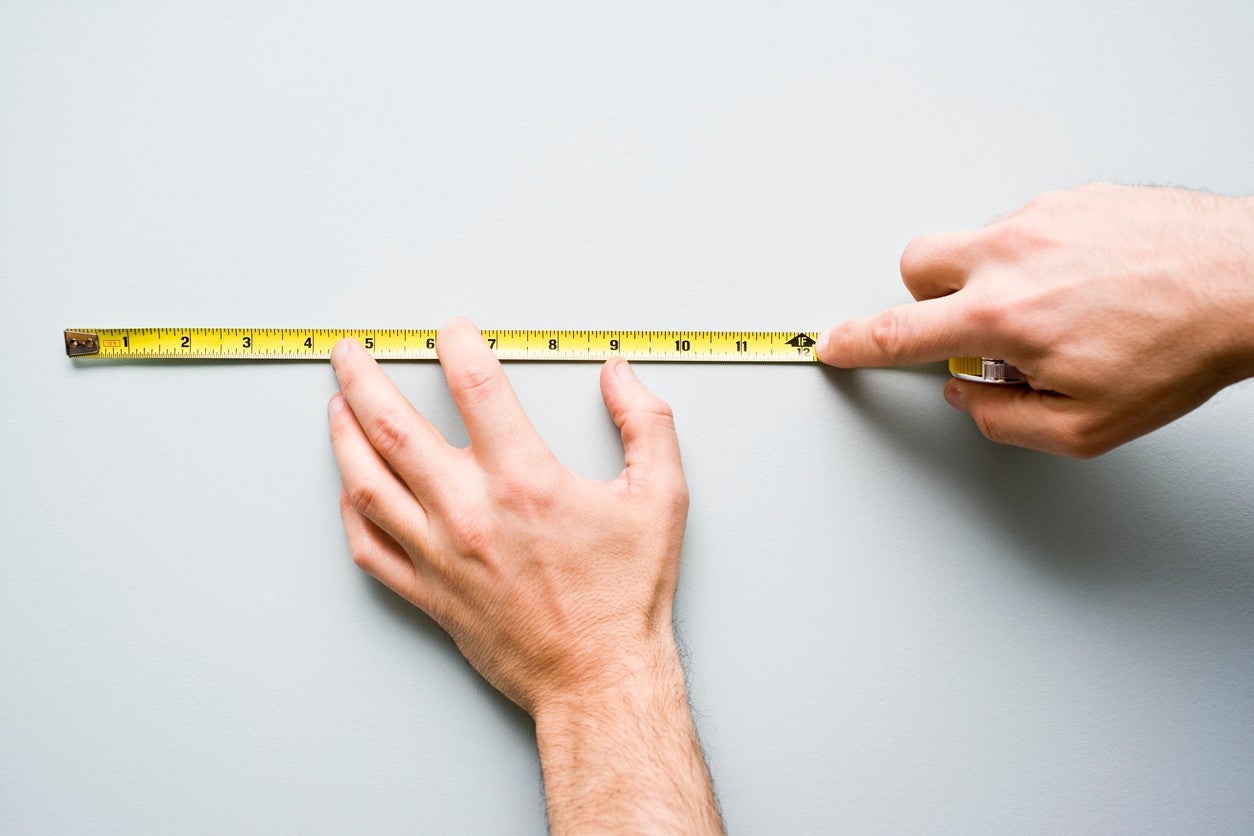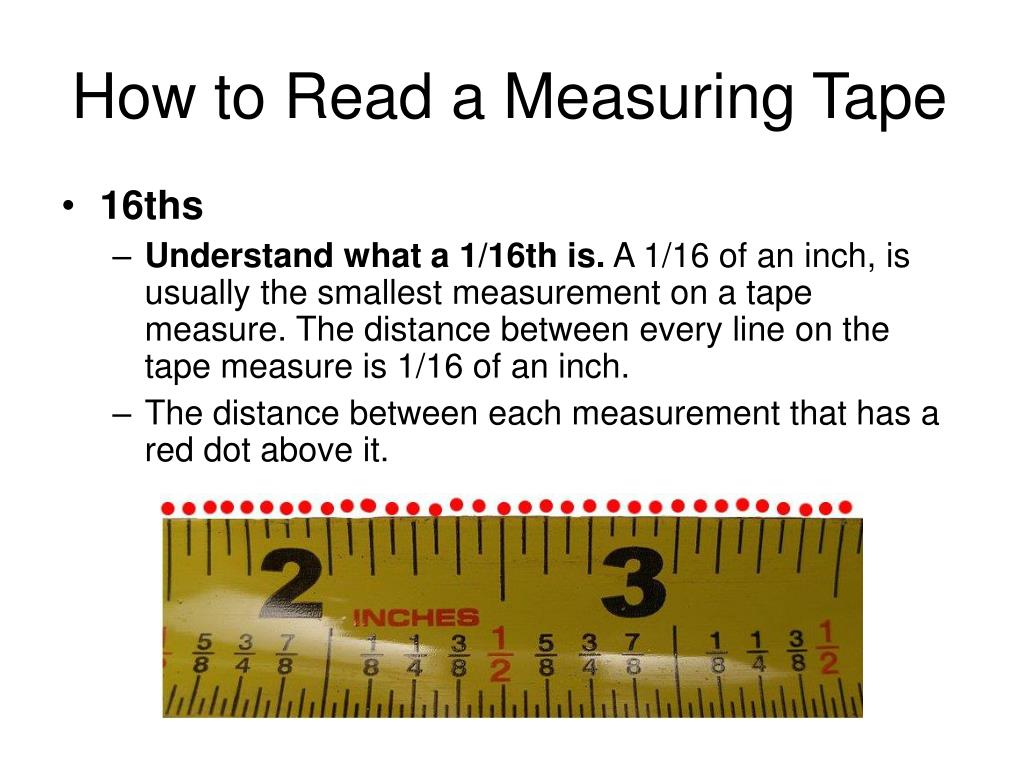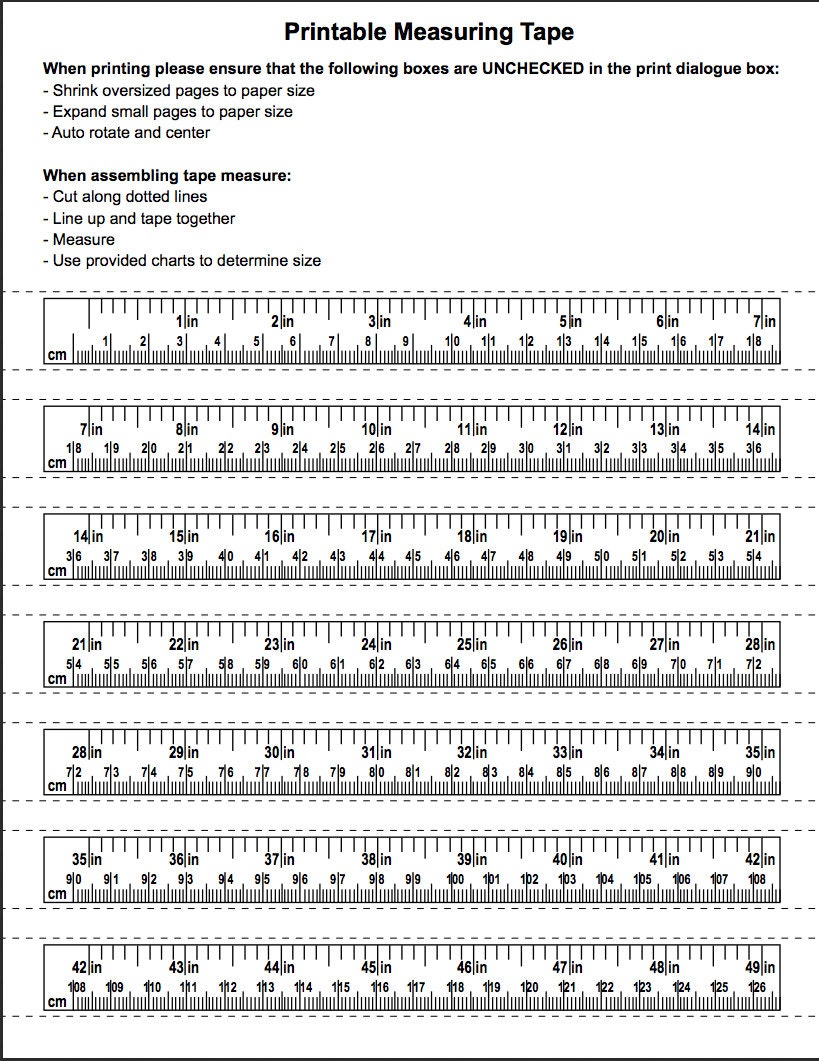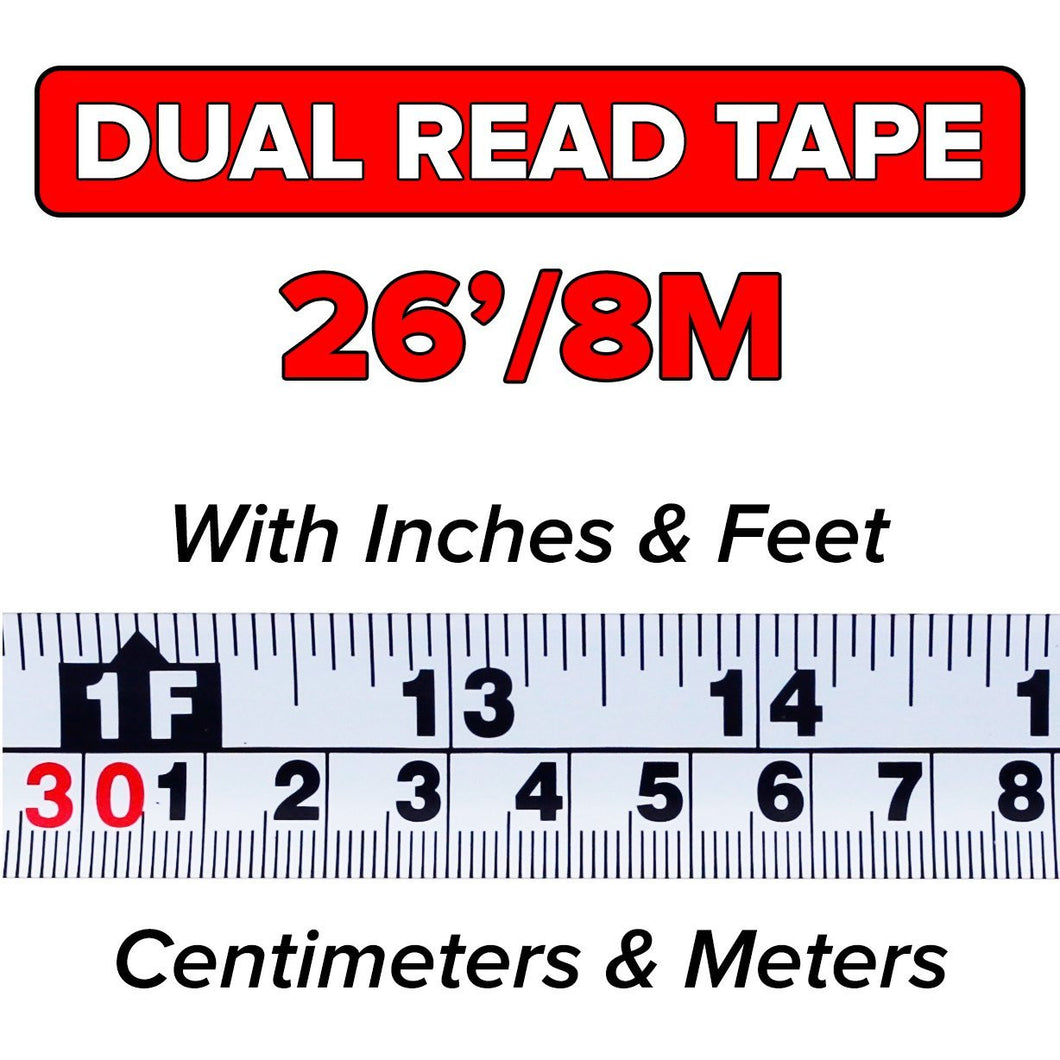Tape measures are often designed for specific uses or trades. Tapes may have different scales, be made of different materials, and be of different lengths depending on the intended use. Tape measures that were intended for use in tailoring or dressmaking were made from flexible cloth or plastic.
These types of tape measures were mainly used for the measuring of the subject's waist line. Today, measuring tapes made for sewing are made of fiberglass, which does not tear or stretch as easily. This type of tape measure will have a floating tang or hook on the end to aid measuring. The tang is connected to the tape with loose rivets through oval holes, and can move a distance equal to its thickness, to provide both inside and outside measurements that are accurate. A tape measure of 25 or even 100 feet can wind into a relatively small container. The self-marking tape measure allows the user an accurate one hand measure.
A tape measure is effectively a flexible ruler that is usually sprung on a retractable mechanism for easy storage, helping to measure the distance or size of any space or object. With linear-measured markings usually covering a number of different scales, a measuring tape can be many different materials. Flexible fabric options are great for accurate measurements across circular or jagged surfaces. Measure tapes often have a floating tang or hook at the end, sometimes magnetic, to secure them in place when in use which is ideal if working alone or in awkward spaces.
This set of tape measures are double-sided with both inches and centimeters. The pocket-sized measuring tapes are portable, durable, and easy to read with accurate measurements and a broad application of use. The black tape measure is retractable, while the pink one is soft and rollable.
The four packs of measuring tapes contain a measuring range of 60 inches . The tailor vinyl tape measure won't stretch or deform and provides flexible, portable, and accurate measurements. The black markings on the tape are easy to read, and the tape has metal tabs on each end to measure directly against the item. Also known as a tailor's tape, sewing tapes are ultra-flexible and mold easily to the body. They are used for accurate measurements for clothing design and alterations. They also have both imperial and metric measurement markings.
A tape measure or measuring tape is a flexible ruler used to measure size or distance. It consists of a ribbon of cloth, plastic, fiberglass, or metal strip with linear measurement markings. Its design allows for a measure of great length to be easily carried in a pocket or toolkit and permits one to measure around curves or corners. A body tape measure is a kind of tape measure that is used for measuring the body. It is usually a soft and flexible strip or ribbon made mostly from plastic or fibre glass.
It has linear-measuring markings of both Customary System of measurement and the Metric System of measurement. The Customary System of measurement, also known as the U.S Customary System, is based on the English System of measurement. Length and distance in the Customary System are measured in inches, feet, yards and miles.
While the Metric System is a system of measurement that uses the meter liter and gram as base units of length , capacity , and weight respectively. The inch and centimeter units are the measuring units commonly on the body tape measure and are used for body measurements. This flexible and accurate tape measure is retractable and can measure up to 60 inches. The tool has a push-button retraction and pin lock to get the most accurate and snug readings. It is made with durable and soft advanced fiberglass tape to avoid any injury or cuts. The double-sided waist tape measure has clear marks in both inches and centimeters.
To read a measuring tape, line the zero mark up at the edge of the item you're measuring, then stretch the tape all the way across the item. Try to keep the tape straight to ensure an accurate measurement! Then, look at the point where the tape meets the end of the item you're measuring and read the nearest large number. The large numbers are the units you're measuring, like inches or centimeters, and the markings between the large numbers correspond to fractions of that unit. The sale of dual Metric/US Customary scale measuring tapes is slowly becoming common in the United States.
For example, in some Walmarts there are Hyper Tough brand tapes available in both US customary units and Metric units. Unlike US rules, of which an overwhelming majority contain both centimeter and inch scales, tape measures are longer and thus traditionally have had scales in both inches and feet & inches. So, the inclusion of a metric scale requires the measuring device either to contain 3 scales of measurement or the elimination of one of the US Customary scales. It consists of a ribbon of cloth, plastic, fibre glass, or metal strip with linear measurement markings.
Its design allows for a measure of great length to be easily carried in pocket or toolkit and permits one to measure around curves or corners. Today it is ubiquitous, even appearing in miniature form as a keychain fob, or novelty item. Surveyors use tape measures in lengths of over 100 m.
Most of the tape measure will have the marking at each sixteenth of the inch and you will have to estimate where the half is found. However, if the tape measure has the markings for 1/32 inch, it will be more precise. You can have the tape measure that have the inches at one side and centimeters at the other side.
Just as you would with a retractable tape measure, look for the spot where the end of the object or distance you're measuring lines up with the tape measure. If the tape measure stretches exactly halfway between the 27 and 28 inch markings, this means that your arm is 27.5 inches long. The tape measure for sewing is usually soft and flexible strip/ribbon with linear-measurement markings made mostly from reinforced polyester or fiberglass.
The most common length of a measuring tape is 60 inches , but there are tapes for sale, for example, 100 inches long or even longer 120" which can be useful for measuring longer lengths . A tape measure usually has two different measurement systems on it. This is a mix of the inch system and the metric system. Most manufacturers have opted to use both systems, for whatever reason.
Even though modern-day measurements are usually taken in inches, some do not, so the calibrations stay. The top half of a tape measure is usually in inches, broken into eighth and sixteenth of an inch increments. The bottom half of the tape is divided into centimeters and millimeters. The large numbers on the top represent inches, while the little marks between the numbers represent increments of an inch mentioned earlier. For example, a 16-foot tape measure has 16-1 foot markers across the top and inch marks . If you are going to be sewing and need to measure fabric then you will need to invest in a fabric measuring tape.
This set of measuring tapes is flexible, durable, and lightweight enough to carry and use at any time. The tapes measure 60 inches in length and have significant/clear markings for easy reading. The black tape measure is retractable, and the white soft tape measure is flexible and meant for various uses. On the tape measure marked with customary units you will find the most significant marks are commonly the inch marks.
These are usually marked by long thin lines and represented by a large numeric value. There are two half inches, four quarter inches, eight eighth inches, and sixteen sixteenth inches in one inch. When I started to sew and for a long time afterwards I just knew the main marks in the tape measure. Something as basic as this should be taught in the school rather than some other nonsense that I learned in school, which I never found a use afterwards. In this age of laser measuring tapes , electronic tape measures and measuring tape apps , and easy paper patterns one may wonder at the use of the ordinary tape measures. But for me it is one of the most useful and necessary sewing tool.
Personally I much prefer this type of measuring tapes for sewing. Converting lengths for sewing is simple using a tailor's tape marked in both cm and inch. All you need to do is read the inch side corresponding to the number in centimeters.
If we have to convert for example 66 cm into inches, looking at the image below we can see the result is 26 inches. The lines on a tape measure are simple to read once one understands what they represent. The longest lines represent the number of inches from the beginning of whatever space is measured. This is usually a different color than the other numbers.
The bigger marks between each inch mark represent one-half of an inch. The markings between each half-inch mark represent a quarter of an inch, while the markings between each quarter-inch represents 1/8 of an inch. Between these 1/8 inch marks are 1/16 inch marks, with some tape measures breaking the inch down into 32nds and even 64ths. It's important to realize that with these types of measuring tapes, unlike other, more durable types, you can easily stretch them out. It's best to either buy new ones on a regular basis to ensure correct measuring or to opt for a fiberglass fabric measuring tape that won't stretch. The current tape measure started with the tailors and it was used to change or to fix the clothes.
The tape measures are found in imperial units of feet and inches and metric of meters and centimeters. A tape measure is a portable measurement device used to quantify the size of an object or the distance between objects. The tape is marked along the tape edge in inches and fractional inches, typically in quarter-, eight-, sixteenth-inch increments. Some tape measures are marked in millimeters, centimeters, and meters on one edge. Let's face it, you need to know your body to get a good fit, and that starts with accurate measurements. I'll admit, I've had some problems with this in the past when measuring myself.
If you have a little fat in the area you're measuring, or even muscle, it's hard to know how tight to pull the tape measure. These types of tape measures were mainly used for the measuring of the subject's waist line. … The self-marking tape measure allows the user an accurate one hand measure. Use the tiny, densely-packed marks for sixteenths of an inch. The shortest lines of all on most measuring tapes are the sixteenth-inch marks. Use the same pattern for recognizing these minuscule measurements.
A measuring tape recoils through a retraction system inside the unit. A retractable tape measure has a flat spring wrapped around a spindle near the middle of the tape. Problems frequently appear when the blade is split or otherwise broken. When the tape is pulled, the defect hooks on the case, stopping the tape from moving.
If the flat metal clip on the end comes loose or gets bent — typically from dropping the tape — it results in inaccurate measurements. While tape measures that have plastic tapes are going to be fairly inexpensive, they are not going to be sturdy and durable enough to stand up to a lot of use without problems. The main issue that you will find with this type of measuring tape is that the plastic will stretch out over time, no matter how careful you are not to pull on it when you are measuring. This will lead to inaccurate measurements and can cause you to make major mistakes when working on a project. They generally come with hard pieces of metal on the ends to make it easy to place the tape at the exact location where you need to start measuring.
Don't try to take clothes measurements with a standard 12″ ruler you'll end up with an inaccurate measurement. If you have no tape measurement handy and this is somewhat of an emergency, you can always download a printable measuring tape online. A laser measuring tape is a small, infrared laser device used to measure distances at great precision. Laser tapes can be used for any sort of leveling and measuring project, such as installing crown molding, hanging pictures, or painting indoors. Another type of tailor measuring tape is the digital tape measure.
This type of measure tape is equipped with a high-precision electronic display LCD. Using tape measure with fractions instead of decimal is more intuitive and commonsensical than decimal for less educated and older people. Metric tape measures are used for measuring elements that have a metric measurement of 10 cm or below. Electronic tape measures make the job easier with the push of a button. Unlike architects and carpenters, tailors use soft tapes. The sewing tapes are a soft measuring tape used by tailors.
Tailors need to note down the readings of measurements of chest, waists, or the other parts of a body. Such a tape needs to be flexible so that it encircles around a body part and also around the neck of the tailor. Sewing measuring tapes measure between 1.5 to 3 meters in length. If you are looking for such a tape, Crown and c are two brands that you can opt for.
The most common tape measures are 12 feet, 25 feet, or 100 feet in length. A 12-foot tape measure is the handiest for consumers. The 25-foot length is called a builder's tape and is marked in feet and at 16-inch increments to make measuring the standard distance between wall studs easier. The 100-foot tape, usually of reinforced cloth, is useful for determining property boundaries and other exterior measurements. In metric measuring tapes, centimeters are the most significant markings.
Centimeters are generally represented by the large lines , and you will see a number next to each line. Same as inches, the line represents each centimeter. The smallest marks on a tape indicate one millimeter or 1/10th of a centimeter. The large, bold markings on a metric tape measure indicate centimeters. The long mark in the center indicates a half-centimeter. To read a metric measuring tape, find the nearest whole centimeter to the end point.
On a tape measure labeled with imperial units, the most prominent marks are usually the one-inch marks. These are typically marked by long, thin lines and fairly large numbers. Pay attention to the material of the tape – it must be strong to serve you as long as possible without stretching.



